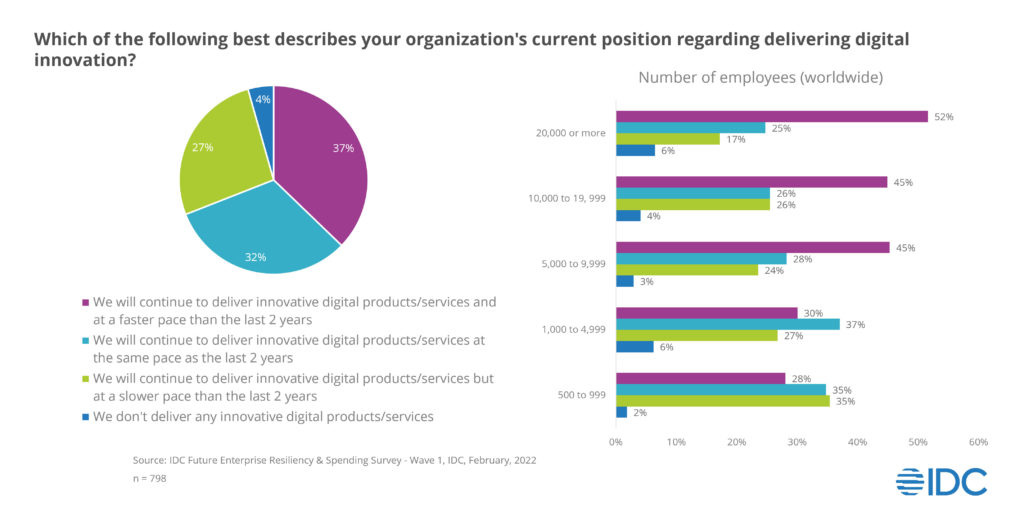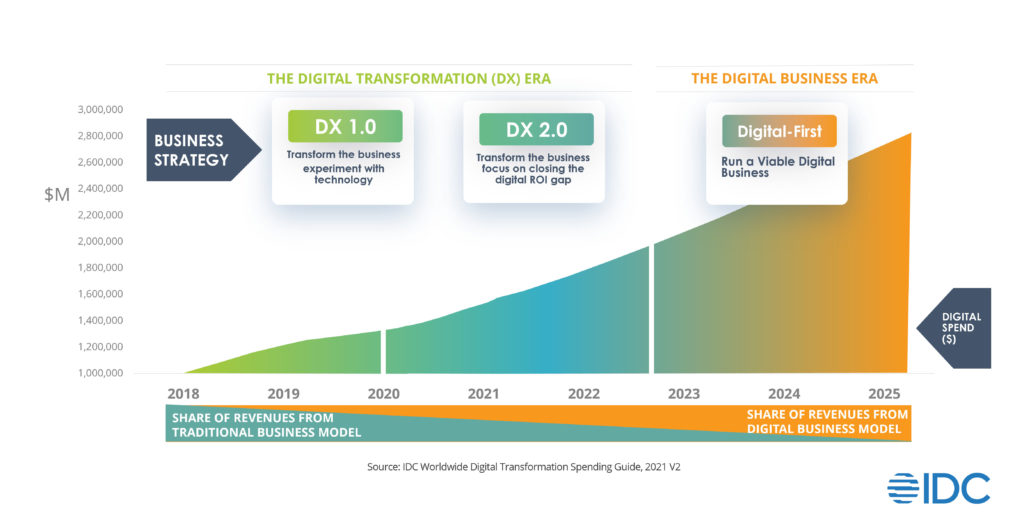The pandemic forced enterprises in practically all sectors to use technology in new ways, including solving new problems related to supply chain delays and creating new sales channels to compensate for the closure of physical stores, due to social distancing requirements. Many organizations made an important discovery during this period – using digital technology to create innovative capabilities offers significant value. Innovators not only stayed afloat during the pandemic, they excelled.
IDC recently set out to discover if interest in pursuing digital innovation in the enterprise has changed since the height of the pandemic. We found that most organizations (69%) plan to deliver innovative digital products and service at the same or faster pace as the past two years. Only 27% said they’d slow down.

However, when we dug deeper into the data, we uncovered an interesting nuance. Larger companies are significantly more likely than smaller companies to speed up their development of digital innovation. Companies with fewer than 5,000 employees are less likely to say they will speed up the pace of digital innovation delivery than they are to say they plan to deliver at the same or slower pace.
The largest companies – those with at least 20,000 employees – are most likely (52%) to say that they’ll deliver innovative digital products or services at a faster pace than the past two years. They’re also the least likely to have plans to slow their pace of digital innovation (although the 6% in this cohort who said they had yet to deliver any digital innovation is higher than most of the other segments).

Some differences between the large and smaller organizations may be tied to funding availability. IDC research shows that budgets are a barrier to innovation and larger companies may be better positioned to outspend their smaller competitors.
In IDC’s view, the continued focus on digital innovation by larger organizations is part of a broader evolution – many of these enterprises are adopting digital-first strategies to support viable digital businesses. For the past five plus years, many enterprises have been making technology investments aimed at digitally transforming their businesses. These investments tended to have internal or technology-focused targets – accelerating the time it takes for employees to find answers to HR questions or reducing the time required to access new applications by shifting to the cloud.
However, many enterprises are undergoing a shift where they are building on the technology investments they made as they digitally transformed in order to run a viable digital business. Rather than setting technology goals, they are prioritizing business goals. Goals might include reaching revenue growth targets, improving customer net promoter scores, and entering new markets. Organizations that successfully execute this shift will derive a larger share of revenue from a digital business model.
Enterprises have also discovered that when they are able to deliver innovative digital capabilities – those that differentiate the company or disrupt a market – they are better able to achieve their business goals. This growing understanding of the role of innovation is driving the largest enterprises to continue to push for the delivery of innovative digital deliverables, even now that the more onerous restrictions of the pandemic have been lifted.
While these large enterprises may want to deliver continued innovation, many are discovering that doing so is a challenge. It requires invested C-suites, cultural changes, strong technology foundations, the right processes, and solid collaboration between the business and technology groups. IDC research indicates that the bulk of organizations are still immature when it comes to putting in place the practices and tools that support the ongoing delivery of innovative digital capabilities.
Interested in learning more about IDC’s Future of Digital Innovation research?




